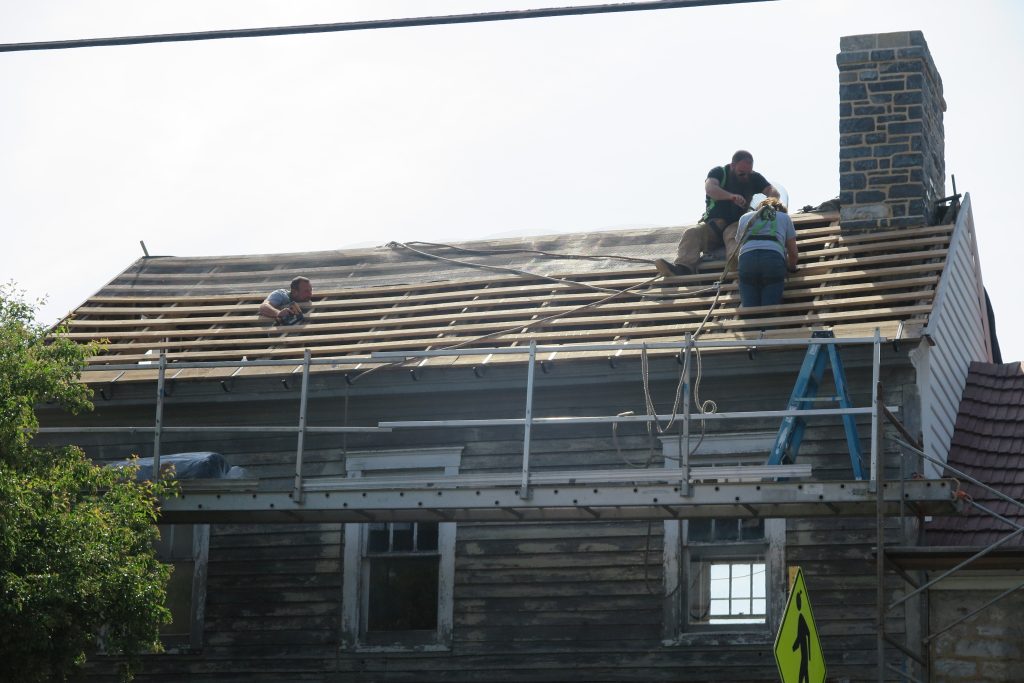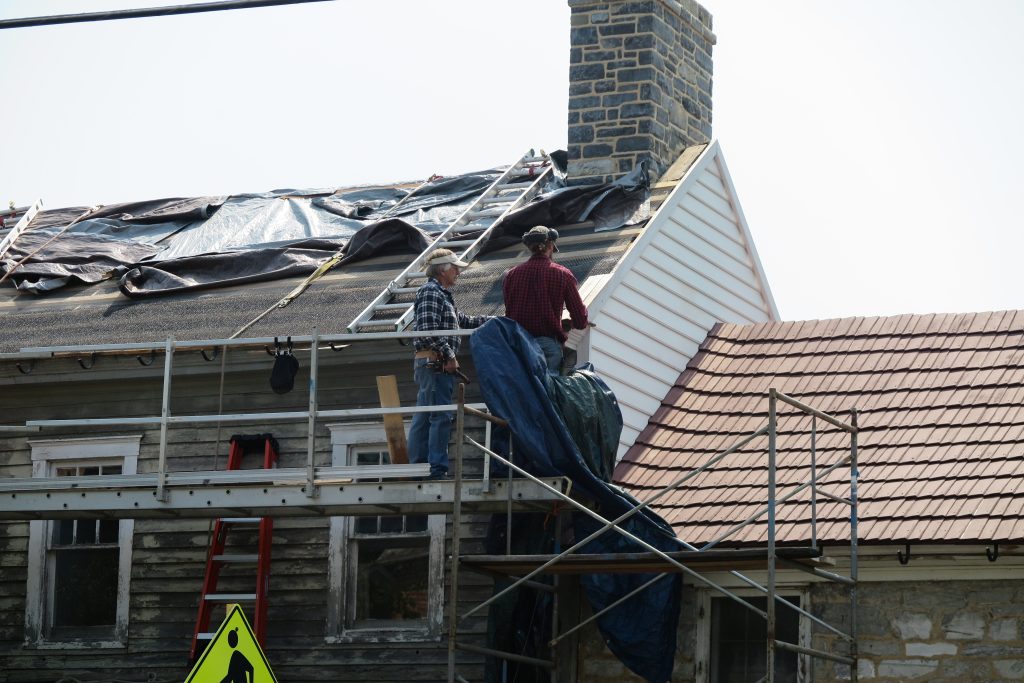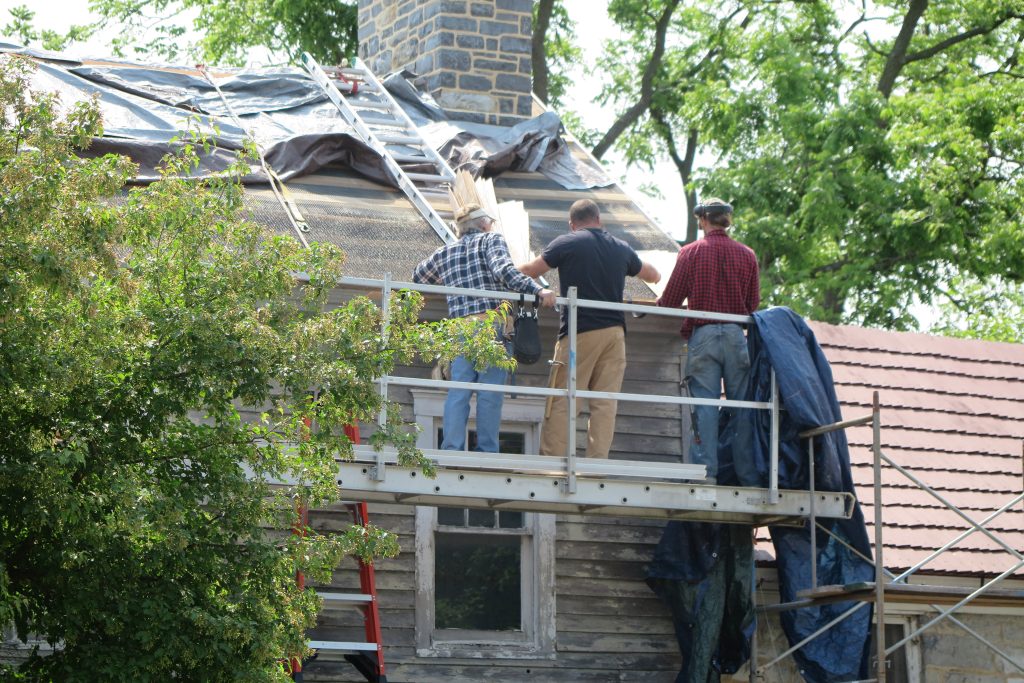Sometimes, when you make a plan and you think you have all your ducks in a row, stuff happens. It seems that with the Stone House roof project, we have suffered more than our share of setbacks. We have been poised to finish the roof over the log side of the house since last fall. Between scheduling conflicts with our installation contractor and the weather, the plans were deferred until this spring. When we finally got everything ready to start the job, we discovered that the cypress wood we had stored for the skip sheathing (also called roof lath) had a fungus problem, and we had to locate more to replace it.
The reason we are using cypress wood for the roof lath is based on the advice we received from our consultant, Mr. James Houston, who is retired from the Pennsylvania Historic and Museums Commission. His experience with side-lap shingle roofs like the one we are installing on the Stone House caused him to realize long ago that the inevitable repair required is much easier when a roof’s lath boards are not hardened and rigid. Most types of wood commonly used for roof skip sheathing grow hard and rigid over time as they are exposed to temperature extremes and the elements. Cypress does not age this way but remains relatively easy to drive a nail into it when a shingle needs to be replaced. We now have our cypress skip sheathing installed.

Mr. Houston also recommended that we install hardware cloth over the skip sheathing as a way to keep animals like squirrels and other critters from getting into the roof structure and building nests. Due to the nature of wood shingles, animals have been known to exploit small openings that occur over time and have even been known to chew holes to enlarge them for greater ease of access. The use of hardware cloth is a modern trick that will be invisible from the outside of the house once the roof shingles are installed. It will help preserve the roof as well as the historical fabric of the roof structure. We also will be installing a material called Cedar Breather® by Benjamin Obdyke, which is a modern crenulated mat that creates breathing space for continuous airflow between the bottom roof lath over the eaves and shingles above. Once again, this bit of contemporary technology will help preserve the roof and the historical fabric that is beneath it.

On the 18th of May 2023 our contractors started installing the shingles over the log side of the Stone House. (See images above and below.) For those readers that do not live locally and who cannot drive by the Stone House and see what has happened, the last shingle was installed over the log side on the 3rd of June 2023. The next step will be getting them painted. We look forward to sharing the images of the finished product in our next post. Good things come to those who wait.

